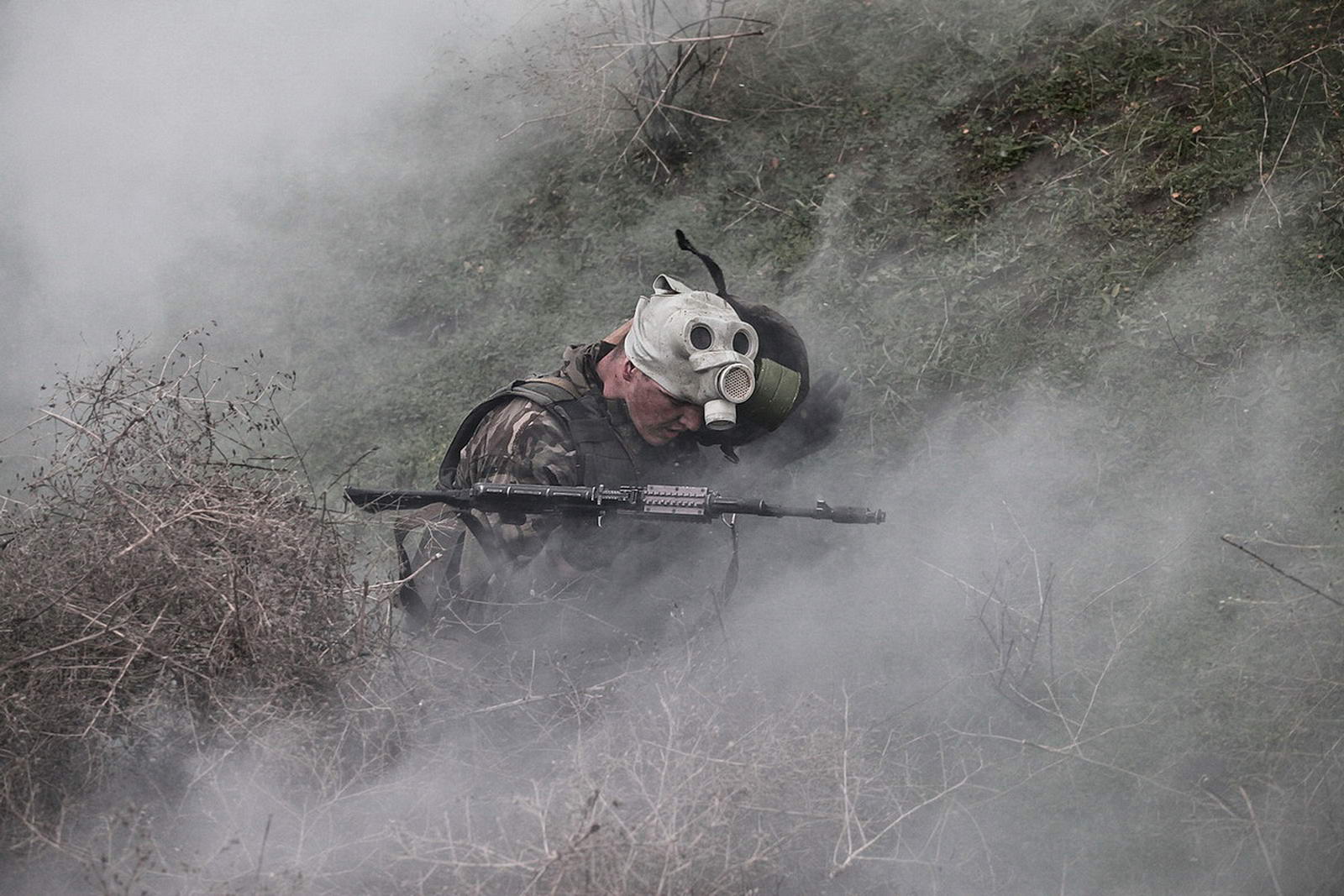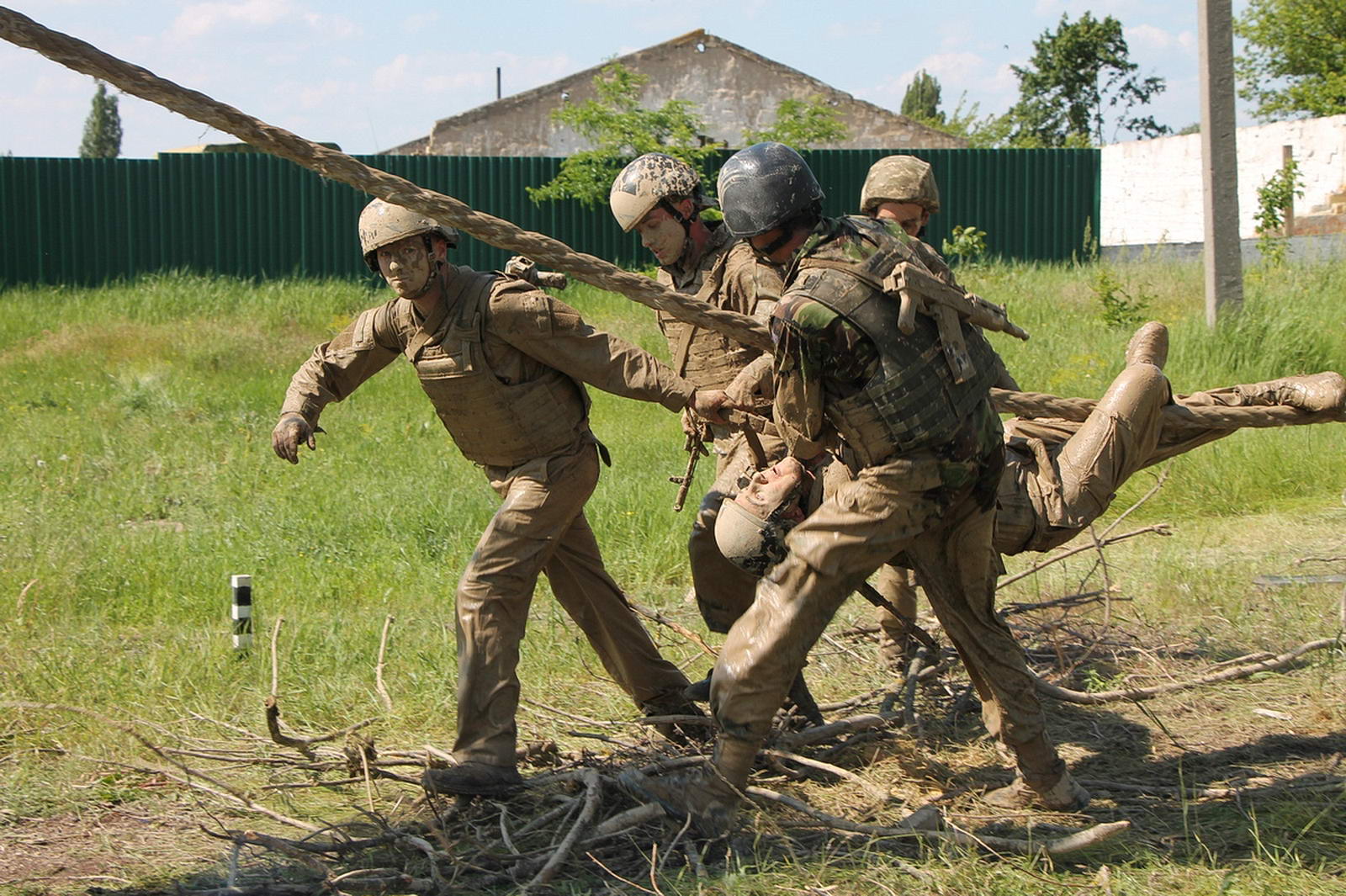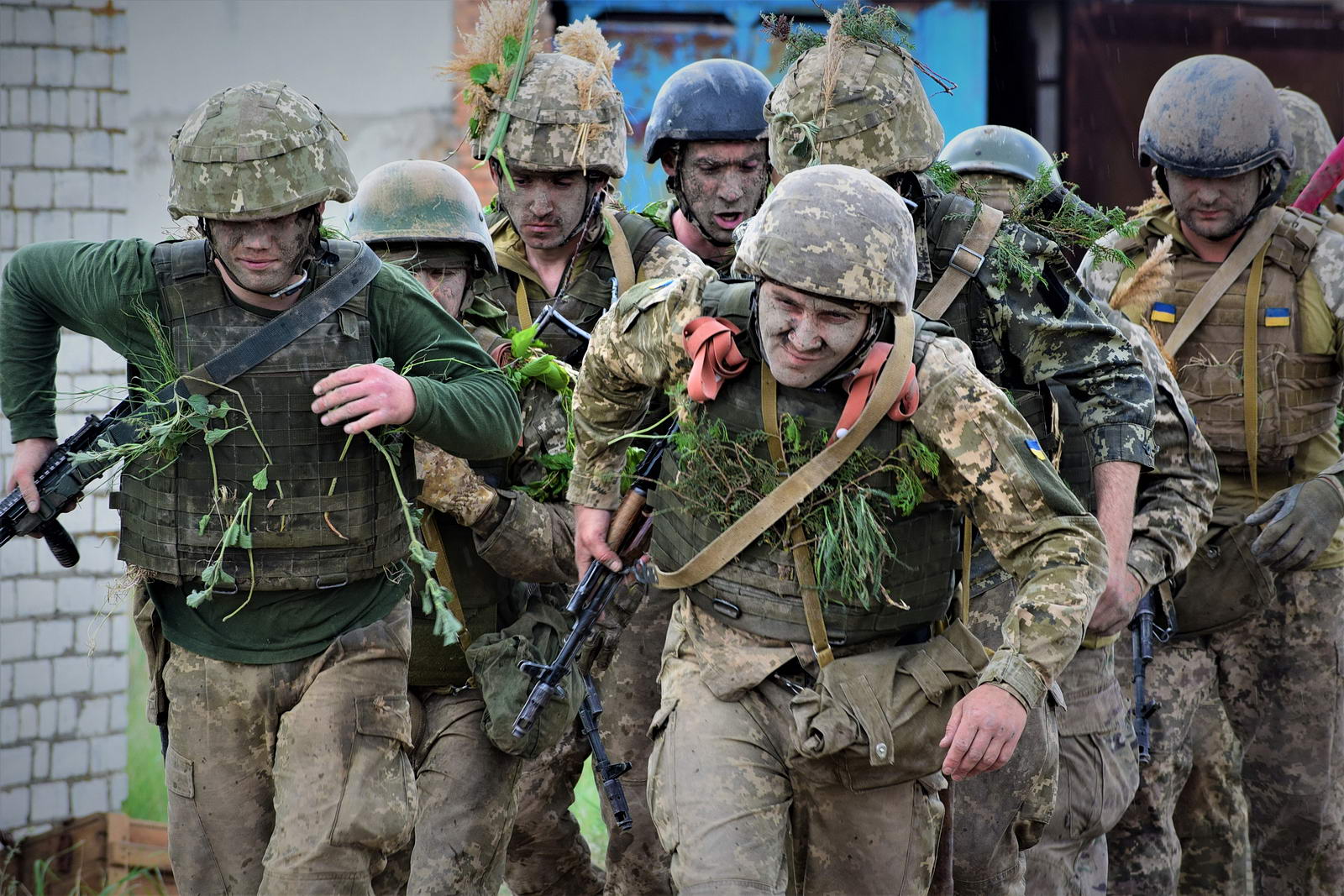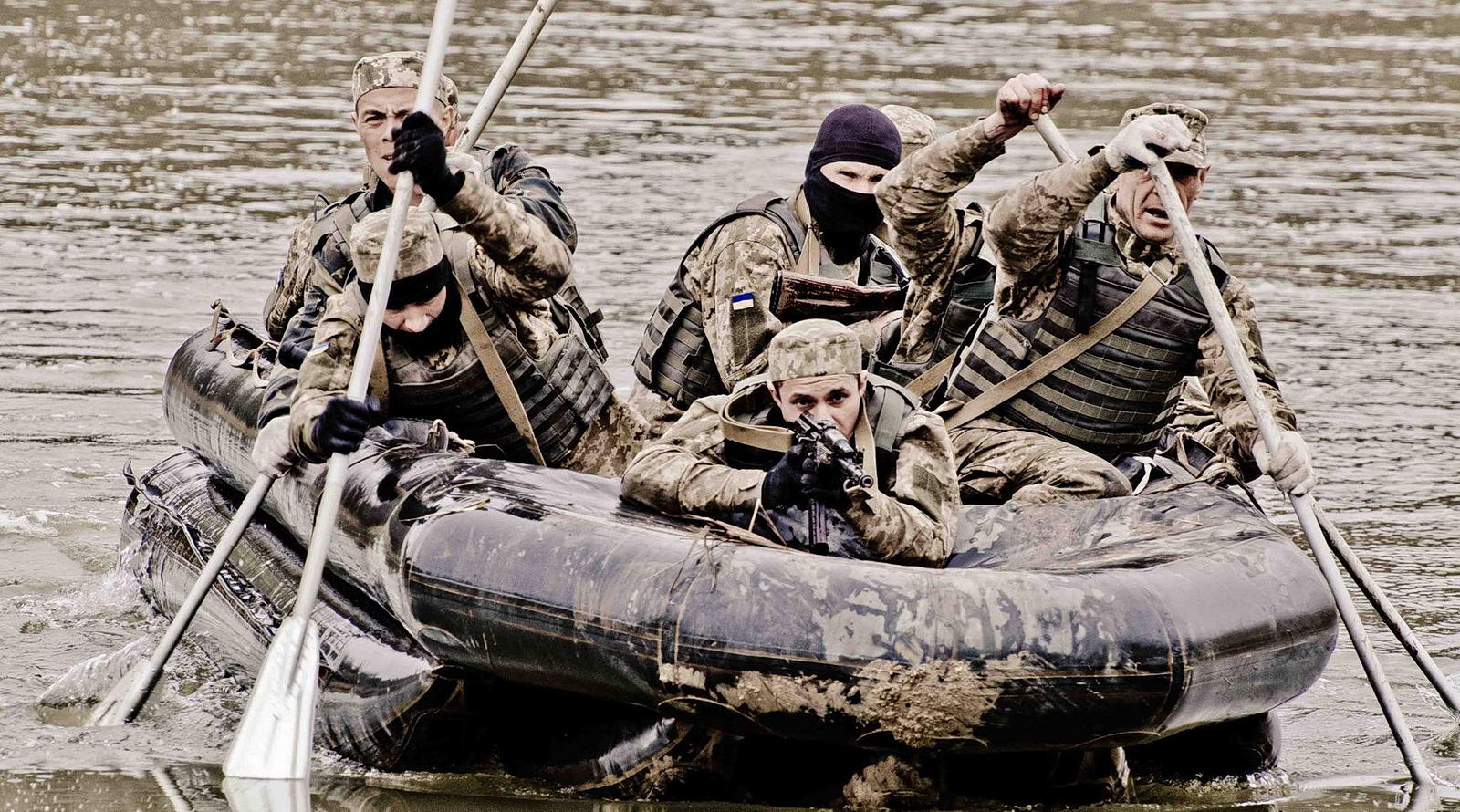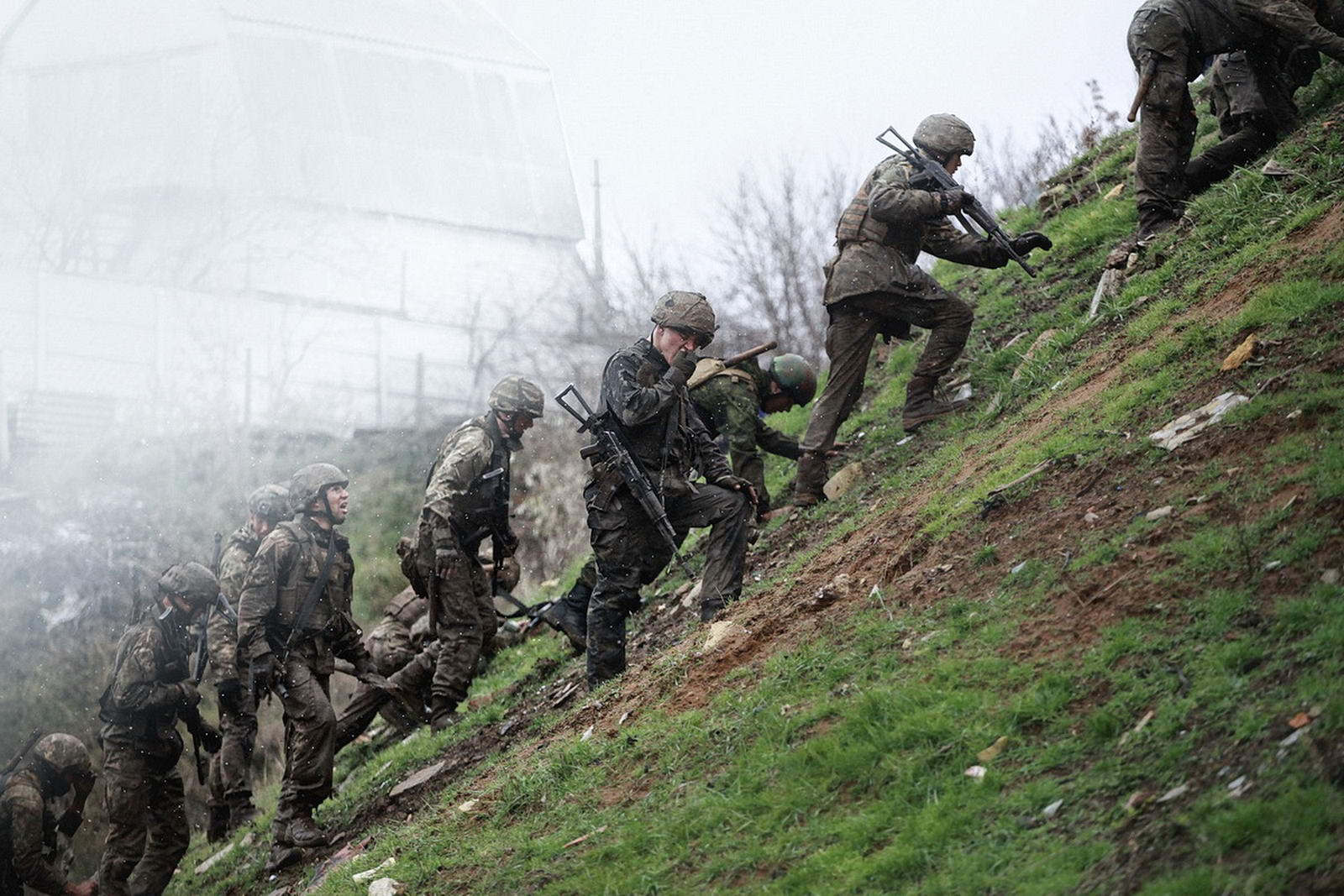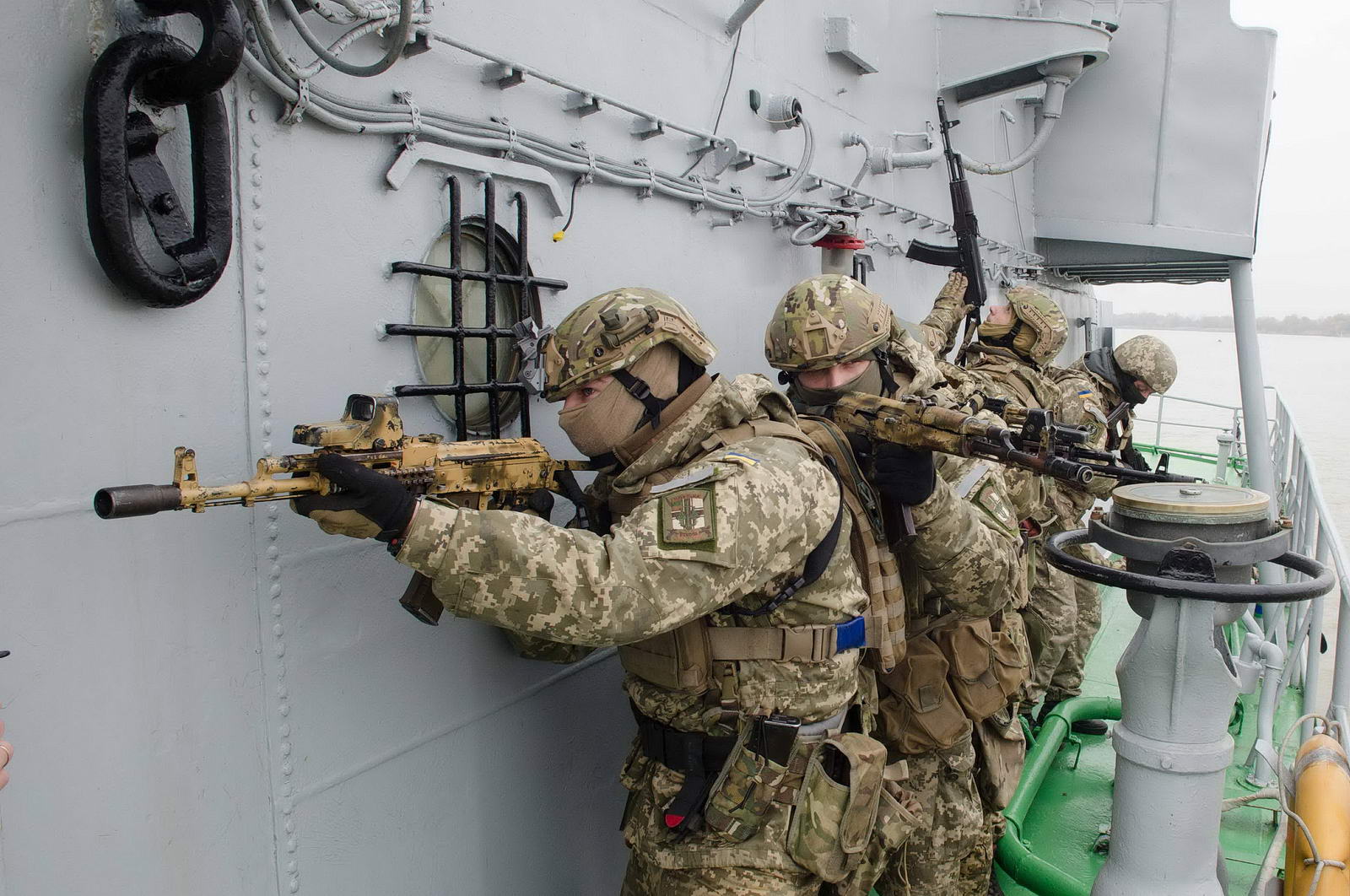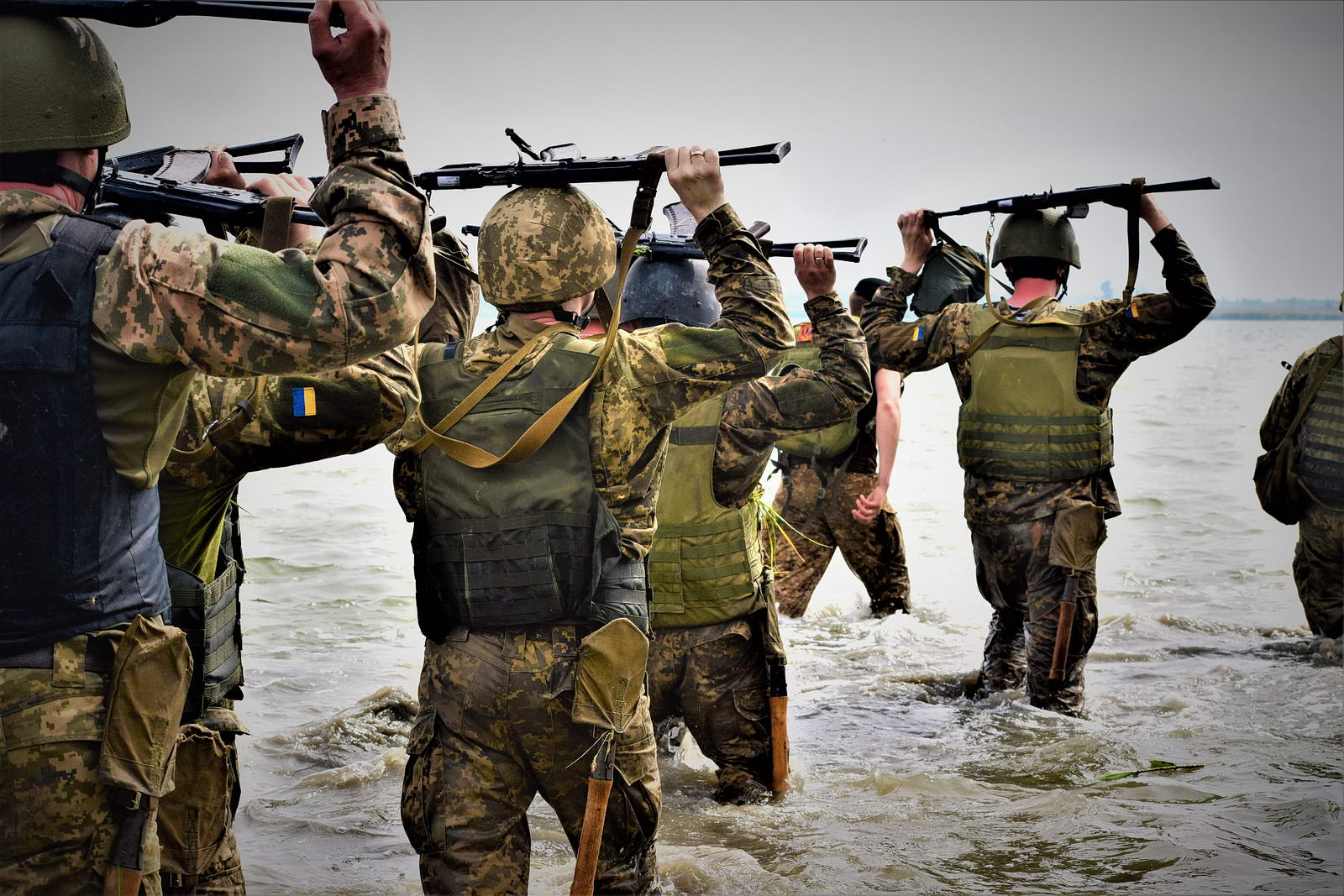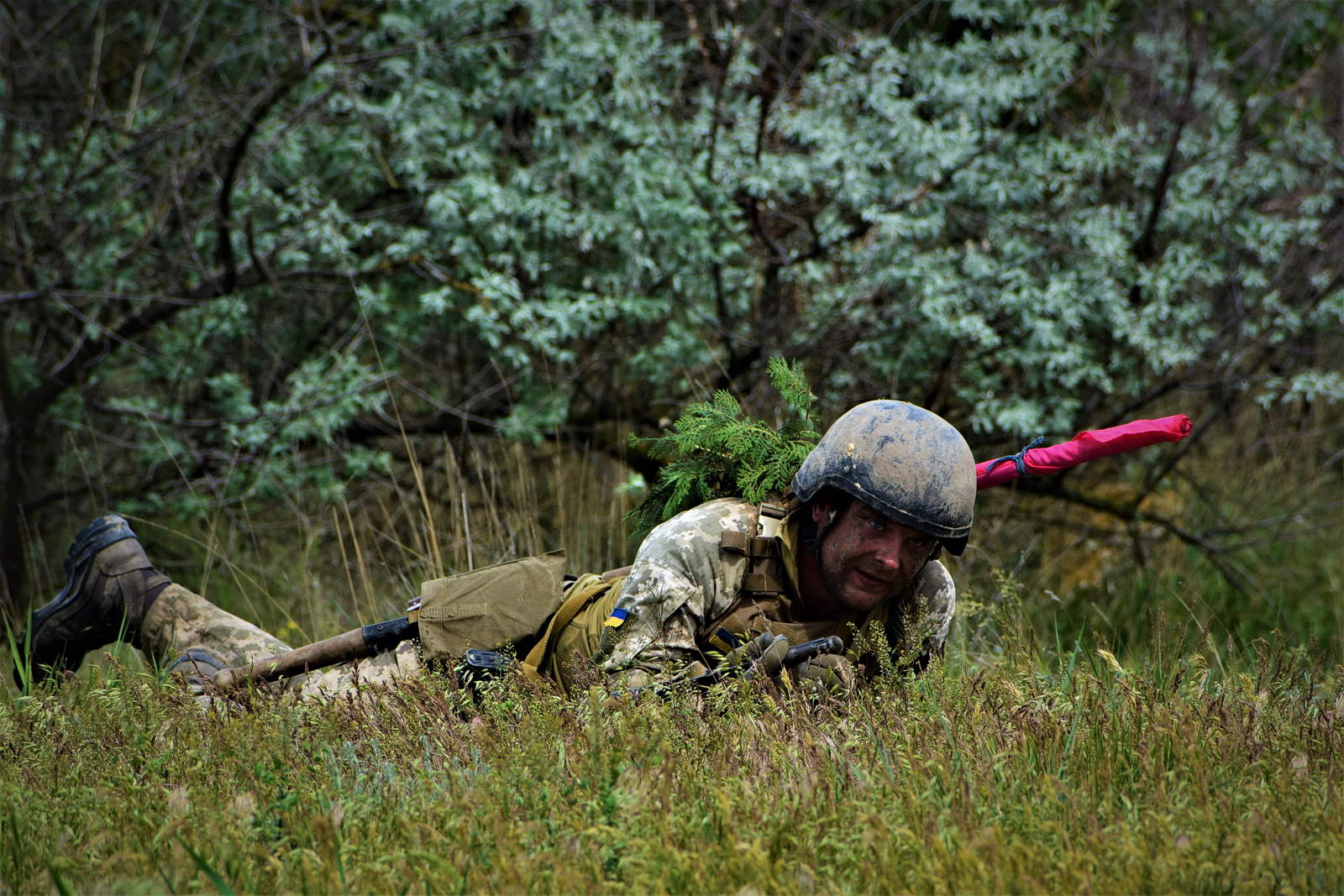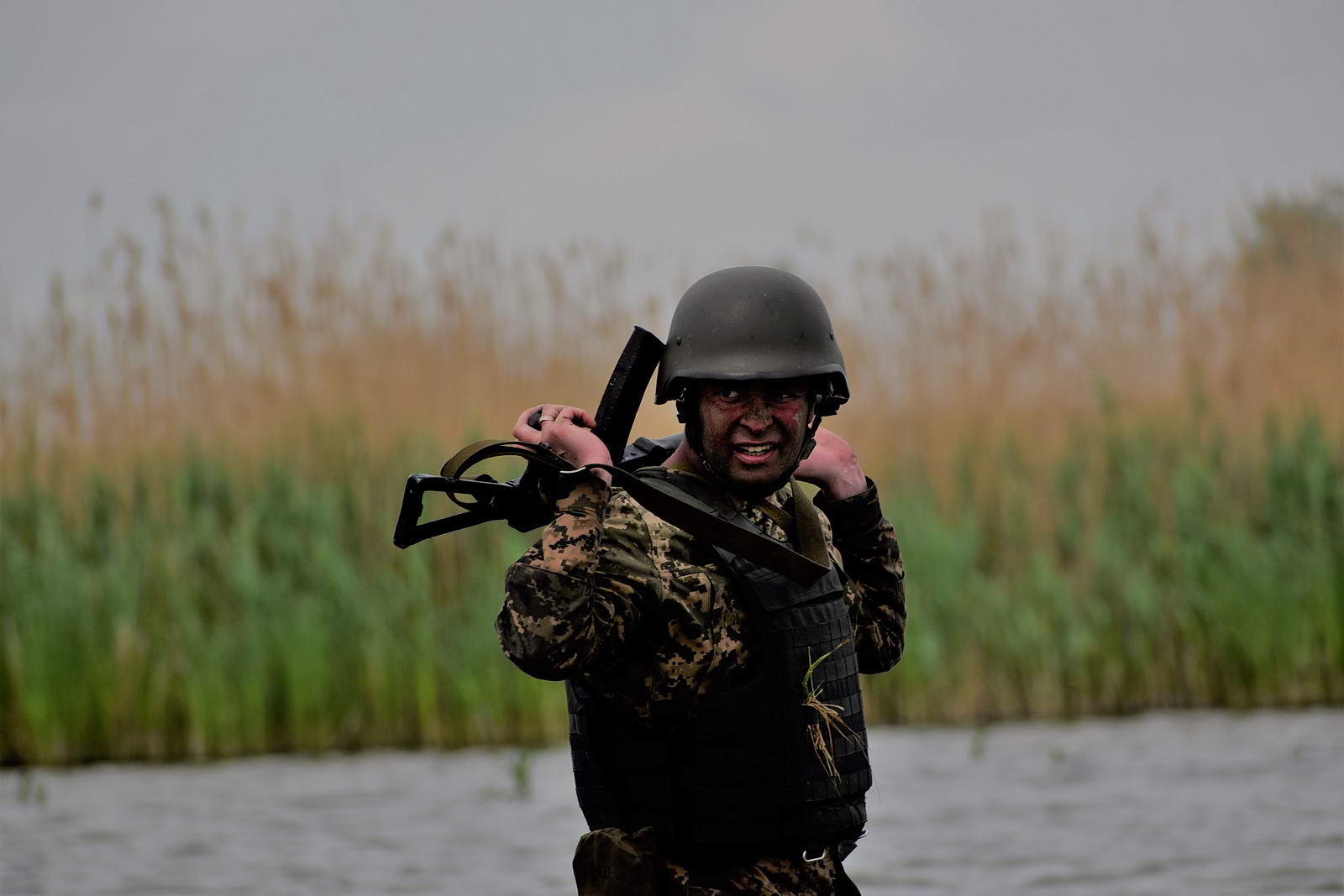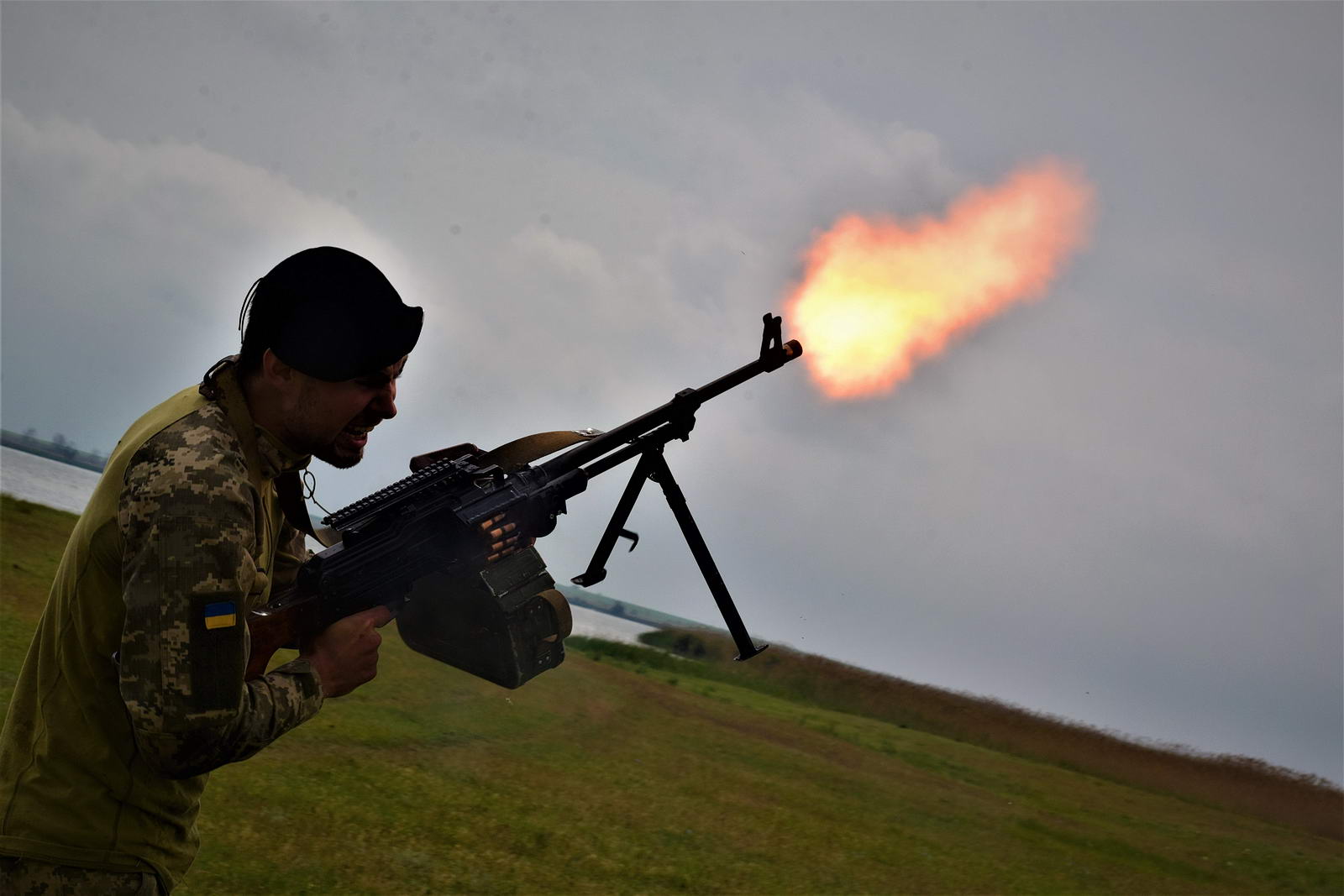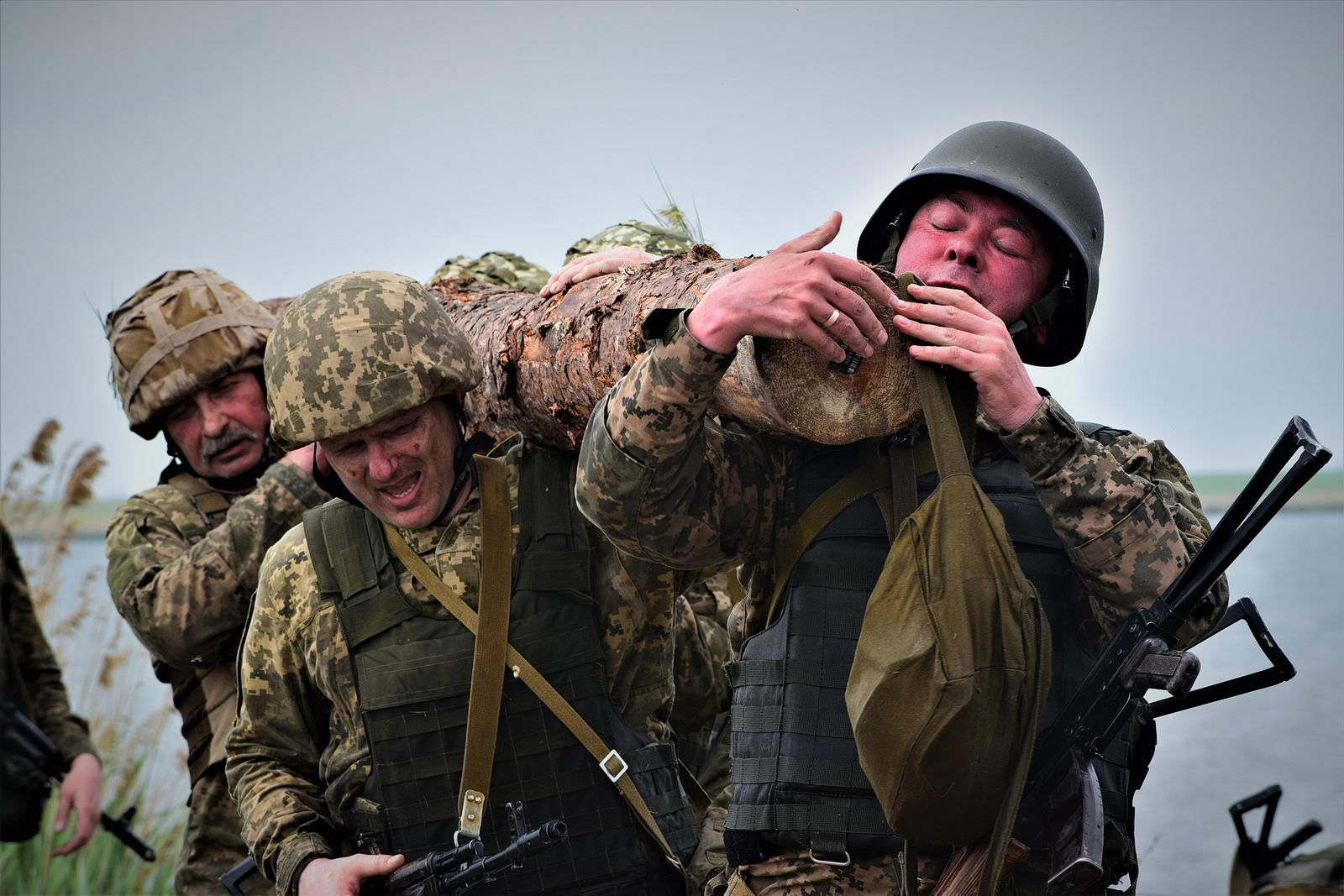MYKOLAIV, Ukraine — On a summer-like morning on May 16, a blue-and-white Mi-14 transport helicopter bearing the “The Ukrainian Naval Forces” inscription neatly touched the ground at a military base some 400 kilometers south of Kyiv, stirring intense noise and wind with its spinning rotary wings.
A group of officers, wearing black berets and striped vests beneath camouflage suits — a trademark of Ukraine’s elite marine troops – came out to meet the chopper, guarded by soldiers in full combat gear, standing on the base’s perimeter.
The most senior of them, the one bearing the insignia of a major general, welcomes his guests with firm handshakes on the landing pad, smiling and saying: “Are you guys hungry after the flight? Get in and have a bite first, there’s no way you will starve until dinner.”
He is General Yuriy Sodol, 47, a high-ranking combat veteran of Russia’s war in Donbas from its very first days in 2014, and the recently-appointed leader of the newly-created Naval Infantry Command.
Against expectations, Sodol, a tall and strong-built man, appears to be a talkative and easygoing person who simultaneously cracks jokes and issue orders. Appointed to the post on March 6, the general welcomed the Kyiv Post for his first interview as the top commander of the naval infantry, deployed on coastal areas and landing grounds.
His recent appointment marked a new stage of the defense transformation under way to meet NATO benchmarks by the end of 2020.
Most of Ukraine’s sea power was lost when Russia launched its military occupation of Crimea.
But Ukraine — with two seas — remains a maritime nation. The naval infantry, or marines, with their decades-long history as an elite and prestigious force since Soviet times, are now charged with spearheading the resurrection of Ukraine’s naval power.
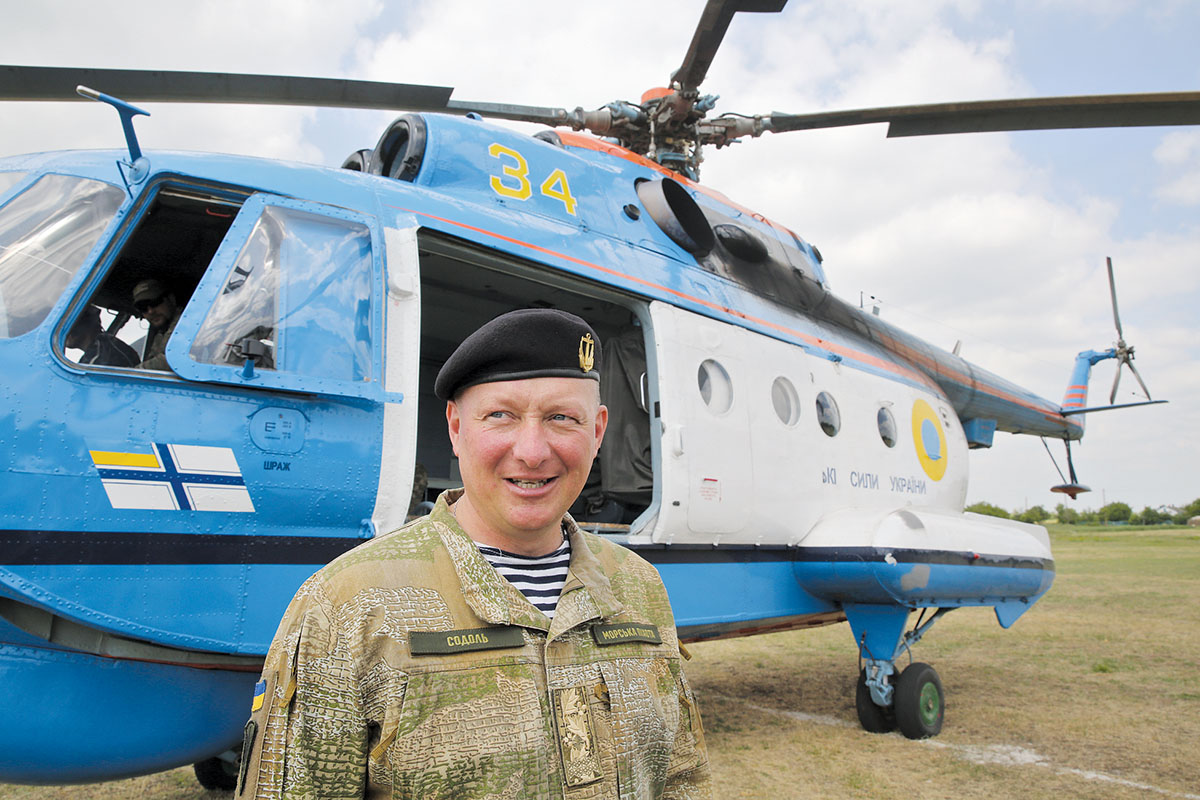
Ukraine’s Armed Forces Major General Yuriy Sodol stands near a transport helicopter at a military base near the city of Mykolaiv some 400 kilometers south of Kyiv (Volodymyr Petrov)
‘Always faithful’
Ukraine’s fighting forces saw some tragic days when Russian troops invaded Crimea on Feb. 24, 2014, and took it over in a matter of weeks.
Out of more than 600 troops deployed to the peninsula, particularly near the city of Feodosiya, only 167 marines refused to defect to Russian ranks. They fled to the continental part of the country, having remained loyal to their military oath and the motto of their service branch: “Always faithful.”
Although severely outnumbered, Ukrainian marines continued to fight against the Russian invaders in the Donbas from 2014 on, mostly being deployed to the maritime belt of the Azov Sea in southern Donetsk Oblast.
Today, naval infantry units continue to defend the destroyed town of Shyrokyne just west of Mariupol, as well as some other crucial front-line hotspots north of the stronghold port city.
“From my perspective, our biggest success in this war was that the enemy was flung out of Mariupol,” the general says. “It was the naval infantry combat formations who did that.”
Up to 53 marines have died in action since 2014.
Sodol, a former high-ranking airborne officer, has his own rich combat record. As a leader of the elite 25th Airborne Brigade, he led his troops during the battles of Slovyansk and Kramatorsk back in spring 2014.
Following the operations, Sodol was decorated with the 3rd Class Order For Courage, and later with the 3rd Class Order of Bohdan Khmelnitskiy. In 2015, he was promoted to the post of first deputy commander of Ukraine’s Airborne Forces, under the direct command of another distinguished Donbas war hero, Lieutenant General Mykhailo Zabrodskiy, widely known for his successful raid against Russian forces in summer 2014.
Through his career in airborne troops since 2003, the general conducted as many as 96 parachute jumps.
Amplifying force
The few remaining Ukrainian marines quickly recovered from the Russian takeover of Crimea in 2014.
Today, the newly created Naval Infantry Command, now a separate department of the navy, has one fully fledged infantry brigade and three separate infantry battalions, augmented with an artillery brigade and a missile regiment, General Sodol said.
“We are a small-scale, stand-alone, self-reliant organism that can perform planning, and also command and supply its combat formations by itself,” he said.
“We now have a new chain of command that is most suitable for the effective control of the marine infantry and naval artillery units in combat.”
In modern warfare, naval infantry are considered as forward special forces that are specifically trained to perform sea- and airborne landings on hostile territory, and also to the capture an enemy’s coastline bases, strongpoints, or seaports.
In many ways, its functions are similar to those of airborne troops. Thus, Sobol says, it is no wonder that many Ukrainian paratroopers, including himself, joined Ukraine’s emerging marine corps, giving it a second breath of life.
“The airborne component is very important for what we do in action,” says General. “Now, each and every marine battalion has a company of paratroopers.”
Together with an intense inflow of manpower, the naval infantry underwent a considerable rearmament. In 2018, as planned, marine combat units were equipped with modernized T-80 tanks, known for their greater maneuverability compared to Ukraine’s armored workhorse the T-64, to better conduct mobile warfare.
Hard to join
Similarly to the Airborne Forces, which have always been considered nearly the strongest branch of Ukraine’s military, the Naval Infantry reserves a clear flavor of elitism among other forces, particularly because of somewhat higher pay for soldiers and officers.
Nonetheless, Sodol says, the higher perks for marines are justified by the strict requirements and standards for recruits and serving personnel.
Even just to win the right to wear a black beret – a mark of big pride for any marine – a serviceperson must go through a special obstacle course, during which his or her resilience and moral courage are put to a severe test.
Normally, the tests foresee a rapid battle march of at least eight kilometers, followed by crossing a simulated battlefield through mud, swamps, and engineering obstacles, in full combat gear.
Then, trainees must cross a river by boat and then wade across it once again. The tests are concluded in a simulated battle, during which all of the tested servicemen must demonstrate good tactical skills, and then a hard physical drill – the collective lifting of a whole log and pushing an armored personnel vehicle out of mud.
Other experienced drill servicemen impose intense psychological pressure upon the trainees to attempt to get them to give up, and thus filter out those not mentally resilient enough to serve in the force.
On May 8, with other fellow marines, Sodol successfully passed the test and won the right to wear the black beret.
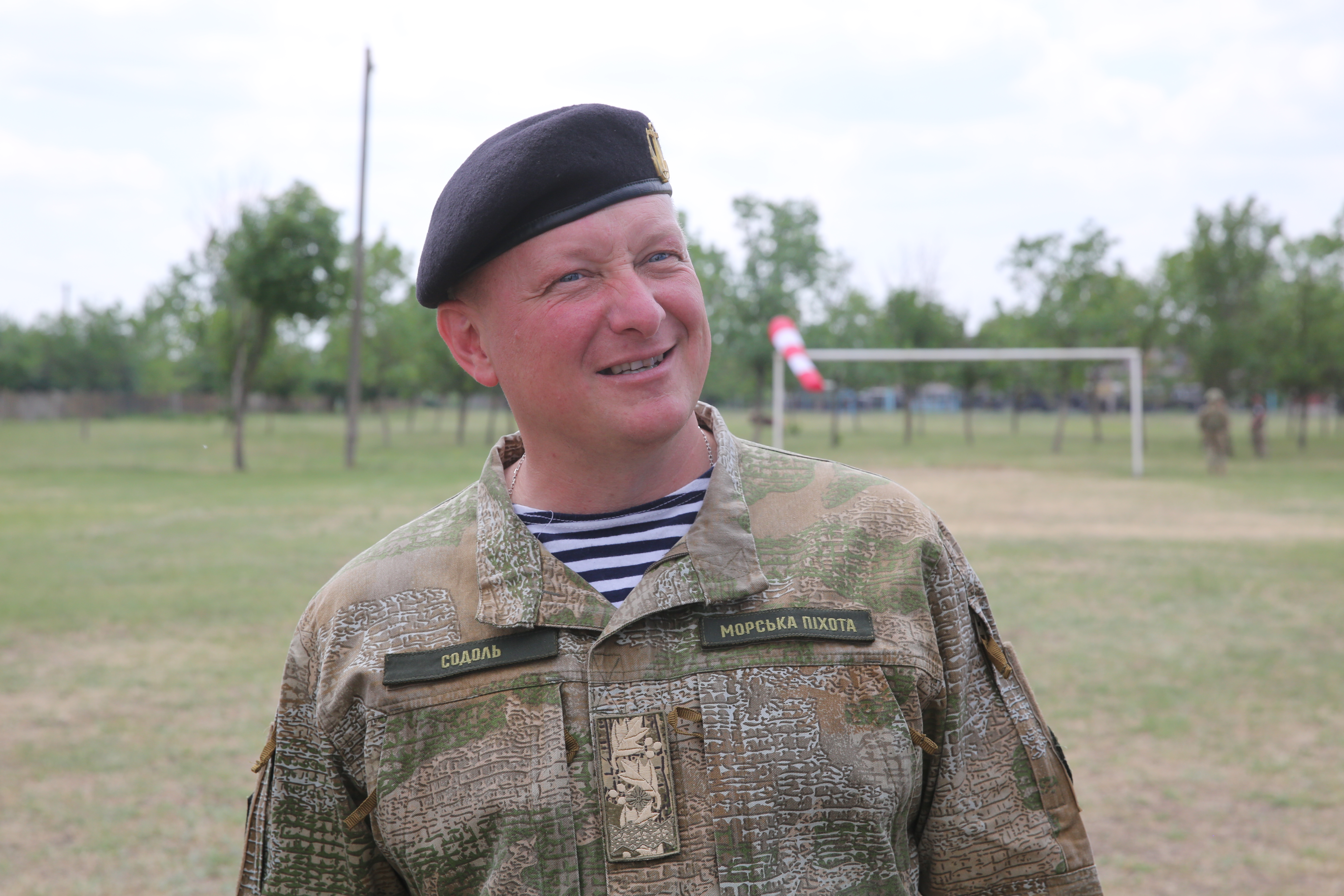
Ukraine’s Armed Forces Major General Yuriy Sodol stands near a transport helicopter at a military base near the city of Mykolaiv some 400 kilometers south of Kyiv on May 16. (Volodymyr Petrov)
“The point of that is that I came to these troops to be their leader, and while they are having this tradition, how would I command them without passing these tests by myself?”
“I’m a soldier above all else. So I simply put my vest and my helmet on, took my rifle and headed off.”
During the latest tests, some 15 percent of the trainees failed to make it to the end.
The strict standards of service and training are enforced to make every naval infantry squad a unit of interchangeable war-fighters.
“If you a marine, you must be able to drive an armored personnel carrier or an infantry fighting vehicle, to deliver fire from a high-caliber KBVT machine gun, to engage targets with anti-tank missiles, operate a radio set, and so on,” the general said.
In the foreseeable future, Ukrainian Naval Infantry Command intends to gain even more manpower trained to the world’s best performance standards, he said, adding that the command, in particular, is carefully studying the forces of its arch-enemy Russia.
Nevertheless, the general added, the Ukrainian naval infantry will in many ways follow the United States Marine Corps as the most perfect model for long-term development.
“From my point of view, the U.S. Marine Corps is undoubtedly the best trained and most combat potent element of the U.S. military, which is able to wage the 5th and the 6th generation warfare – not only on the ground, but also offshore, in the air, and so on.”
“It is the waymark that we all aspire to.”
